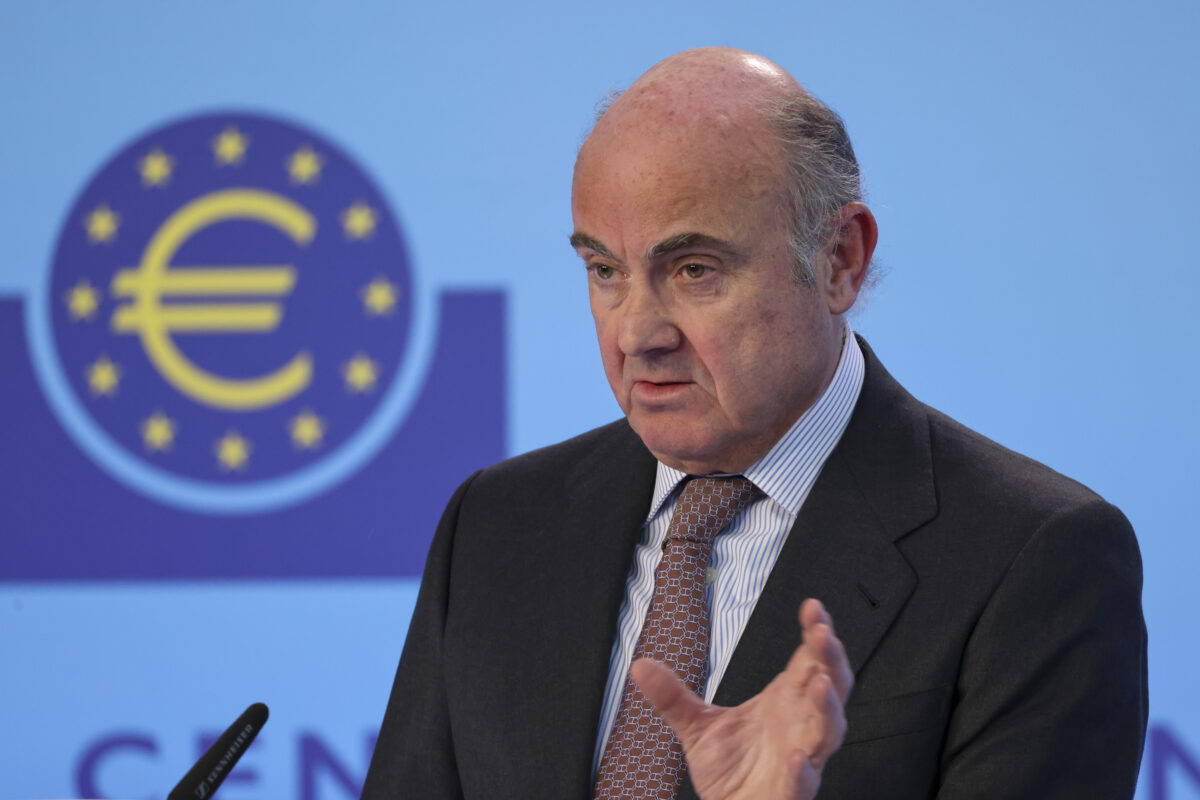FMW-Redaktion
OPEC-Generalsekretär Barkindo hat heute in London eine Rede gehalten. Daraus kann man, wenn man denn will, die zumindest offizielle Sichtweise der OPEC ablesen, wie sich die Situation am Ölmarkt derzeit verhält, und wie es mit der Ausbalancierung von Angebot und Nachfrage weitergehen soll. Damit Sie als Leser einen besseren Eindruck seiner Rede bekommen können, haben wir am Ende dieses Artikels den größten Teil der Rede im Wortlaut abgedruckt. Barkindo´s folgende Aussagen (von uns sinngemäß dargestellt und kommentiert) stammen aus seiner offiziellen Rede und Aussagen „drum herum“ bei der „Oil & Money Conference“ in London.
Man sei derzeit in Gesprächen mit Russland um die Kürzungs-Vereinbarungen zu einer Dauer-Veranstaltung zu machen.
Der saudische Öl-Minister Al-Falih sei derzeit auf Rundreise bei anderen OPEC-Mitgliedern, um diese zu überzeugen, dass weitere Aktionen sinnvoll seien (wahrscheinlich erneute zeitliche Verlängerung der Kürzungen über März 2018 hinaus).
Barkindo will US-Produzenten wie Hess und andere persönlich treffen um seine „Anstrengungen“ fortzusetzen (Anmerkung FMW: Bitte, bitte, hört auf so viel zu fördern…?).
Die Ängste vor den US-Frackern seien laut Barkindo übertrieben, da diese dabei seien ihre Strategie zu ändern, weg von der Menge, hin zu werthaltigem Handeln (Ölproduktion muss auch Gewinne abwerfen).
In seiner Rede spricht Barkindo von einer derzeitigen Erfüllung der Fördermengenkürzung von um die 100%. An anderer Stelle spricht er von mehr als 116% Erfüllungsquote bei OPEC und Nicht-OPEC-Ländern.
Es gäbe keinerlei Zweifel daran, dass der Ölmarkt sich derzeit ausbalanciere, und das in zunehmender Geschwindigkeit. Stabilität kehre zurück in den Markt, so Barkindo. Und am Ende des Tunnels sei viel mehr Licht zu sehen als in den letzten drei Jahren.
Libyen und Nigeria werden wohl auch weiterhin nicht an den Kürzungen teilnehmen aufgrund von „signifikanten Herausforderungen“ (also Bürgerkrieg, komplett leere Staatskassen etc).
Interessant: Barkindo als Vertreter der OPEC-Gemeinschaft verkündet in seiner Rede doch tatsächlich, dass man in seinem „World Oil Outlook“ am 7. November verkünden werde, dass die globale Öl-Nachfrage im Jahr 2020 100 Millionen Barrels pro Tag erreichen werde, und sogar 111 Millionen Barrels im Jahr 2040. In der absehbaren Zukunft sehe man keinen Höhepunkt auf der Nachfrageseite – sie werde Jahr für Jahr steigen. Anmerkung von uns: Ach so, es gibt also keinerlei technologischen Fortschritt, keine Elektroautos etc? Aber das ist nur unsere bescheide Meinung als externe Beobachter.
Hier der Hauptteil von Barkindo´s Redetext. Die Einleitung mit den üblichen Floskeln haben wir weggelassen.
Ladies and gentlemen,
I recall speaking here at last year’s Oil & Money conference, sharing a platform with another good friend, Fatih Birol, the Executive Director of the International Energy Agency.
The focus on OPEC back then concerned the decision adopted by OPEC Member Countries at the 170th (Extraordinary) Meeting of the OPEC Conference on September 28, 2016 in Algiers. Here, the OPEC Conference opted for an OPEC production target ranging between 32.5 and 33 million barrels a day, to bring the market rebalancing forward and help return a sustainable stability to the industry.
At this conference last year there was acknowledgement of the extensive efforts that went into the decision taken in Algiers, but I was also greeted with some scepticism about whether OPEC could implement what was agreed in Algiers in a full and timely manner. Moreover, there were possibly even more sceptics who poured scorn on the idea of bringing on board non-OPEC nations to take part in the market rebalancing process.
I am happy to stand here today and say that those sceptics were mistaken.
Through extensive and well-coordinated consultations, enormous commitment, great diligence, necessary flexibility and strategic compromises, 24 participating OPEC and non-OPEC producing nations agreed on the landmark ‘Declaration of Cooperation’ at the end of last year, whereby they decided to adjust production by approximately 1.8 mb/d, for a period of six months, beginning January 1. This has since been extended by a further period of nine months, to the end of March 2018.
The ‘Declaration of Cooperation’ is unparalleled in the history of the oil industry. Given the nature of this oil market cycle, with the magnitude of the price drop in real terms higher than for all previous cycles, the multiplier effect that low oil prices have had on deflation, and its destructive impact on investments, companies and jobs, a collective and concerted effort was required. No-one could have acted alone.
The historic commitment made by the 24 oil producing nations was one to all industry stakeholders, both producers and consumers, as well as one to the broader global community, through the move to restore oil market stability and the potential positives of this for the global economy.
Of course, when the ‘Declaration of Cooperation’ came into being, we also recognized that this historic decision was only the end of the beginning of this process. The decision had to be delivered on.
Again, we were greeted with sceptics – we heard stories of OPEC’s often weak conformity to past production adjustments, and the lack of past support from non-OPEC nations.
While the process has not always been smooth given the severity of this cycle, I believe that if we look back over the past nine months or so we can be happy with our collective efforts to overcome the challenges of the current oil market cycle.
There is no doubt that the market is rebalancing at an accelerating pace; stability is steadily returning; and there is far more light at the end of the dark tunnel we have been travelling down for the past three years.
Together with our friends from non-OPEC we definitely turned an historic page in December 2016 and today we are helping write a new chapter of sustained stability in the global oil industry.
I have heard firsthand a general feeling of optimism, from Russia’s President Vladimir Putin; from a variety of OPEC and non-OPEC Ministers, all of whom are part of the historic ‘Declaration of Cooperation’; as well as in India, a major consuming country that is expected to lead oil demand growth in the years and decades ahead.
I have gauged the industry’s temperature. There is no doubt that we are starting to feel a warmer glow. There is now more talk of a brighter outlook. It is a feeling that has been missing from the industry for far too long. This positivity is underscored by recent data.
The global economic recovery has gathered momentum this year. In our December 2016 MOMR, we saw global growth for 2017 at a level of 3.1%. However, this has since been revised up significantly to 3.6%, on the back of improving global trade, potential tax reform in the US, the ongoing positive dynamic in the Eurozone and, to some extent, in Japan, solid growth in China and India and a marked improvement in Russia and Brazil. For 2018, this positive trend is set to continue with a healthy growth forecast of 3.5%.
This was supported by the International Monetary Fund during the recent annual IMF and World Bank meetings in Washington, with Christine Lagarde, the IMF Managing Director, stating that it is the first time in a decade that we have seen such a strong recovery.
Correspondingly, global oil demand growth has also been robust and there are signs of a strengthening trend. In our December 2016 MOMR, we saw global oil demand growth for 2017 at a level of 1.15 mb/d. This has been revised up considerably to now stand at 1.5 mb/d. For 2018, this encouraging dynamic is set to continue with a forecast of 1.4 mb/d.
We are not alone in our more positive oil demand numbers, with many other agencies revising their demand numbers upward in recent months.
The process of onshore and offshore destocking continues apace.
At the start of 2017, the OECD stock overhang was at 338 mb above the five-year average. This level fell gradually in the first four months of this year to just below 300 mb. In the following five months from May to September, however, it fell by over 140 mb to stand at 159 mb above the five-year average for the month of September.
Of this, 132 mb constitutes crude and 27 mb products. It underscores the fact that product inventories have almost converged with the five-year average.
Crude in floating storage is also down by an estimated 50 mb since June, with the help of a narrowing contango, and then Brent flipping into a clear backwardation for the first time since the second half of 2014.
There has been a massive drainage of oil tanks across all regions, in terms of both crude and products. A balanced oil market is now fully in sight.
This process has evidently been driven by the unprecedented conformity levels to the production adjustments in the ‘Declaration of Cooperation’. These consistently high monthly conformity levels around or over 100% have now put to rest any scepticism on the commitment of all participating OPEC and non-OPEC countries to jointly restore balance to the oil market.
Ladies and gentlemen,
The first nine months of the ‘Declaration of Cooperation’ have laid the much needed foundations for the sustainable stability we all desire. It is vital that this platform is not only retained, but built upon.
Firstly, we need to ensure that balance is achieved in a full and timely manner. This benefits all industry stakeholders.
Let me stress that we continue to welcome dialogue among other producers outside of the ‘Declaration of Cooperation’, as well as consumers. For instance, we appreciated the initial dialogue we had with US independents at CERA Week in Houston in March.
We all understand that we are part of a dynamic and inter-linked global oil market; one where we share common challenges and responsibilities.
Secondly, we need to appreciate that the short-, medium and long-terms are all interlinked. We require stability and balance across all timeframes to ensure future demand growth is met. Here, it is particularly vital to focus on investments.
In our upcoming World Oil Outlook 2017, to be launched on November 7 in Vienna, we expect demand to pass 100 mb/d in 2020 and to reach over 111 mb/d by 2040. Let me stress that we see demand growing in every year of the Outlook. There is no peak oil demand for the foreseeable future.
On top of this, we should also remember that oil producers and companies must invest heavily simply to offset the impact of natural decline rates. The general consensus is an annual decline rate of 5%, which suggests that the industry needs to add over 4 mb/d each year to just maintain current production levels.
Investments are expected to pick up slightly this year and in 2018. However, this is not anywhere close to past levels and it is more evident in short-cycle, rather than long-cycle projects, which are the industry’s baseload.
I should stress that OPEC Member Countries themselves have defied the trend and continued to invest through the industry downturn. OPEC is therefore positioned to continue to be a dependable and reliable supplier of crude and products to global markets.
And thirdly, from the perspective of the ‘Declaration of Cooperation’, at OPEC we recognize the importance of institutionalizing a framework that builds on this unparalleled global platform of stability. This would go beyond the short-term and look at some of the broader challenges, as well as opportunities, the oil industry is expected to face in the years and decades ahead.
For example, as we look to the UNFCCC’s COP 23 in Bonn next month, the key question is how can we as an industry further help meet the challenge of climate challenge? Of course, we acknowledge the challenges of emissions that come from burning fossil fuels, but I am a believer that solutions can be found in technologies that reduce and ultimately eliminate these emissions. In this regard, I welcome coordinated action within the industry and through various research and development platforms, such as the Oil & Gas Climate Initiative.
From OPEC’s perspective, earlier this week we convened a technical workshop to examine issues related to the UNFCCC process in the lead up to COP 23, which included representatives from OPEC and non-OPEC, the UNFCCC Secretariat, India, as well as internationally renowned experts. It is vital we stay fully engaged, play a leading role, and develop our own rule book for the Paris Agreement and beyond.
–
–
–

OPEC-Generalsekretär Barkindo. Foto: Bundesministerium für Europa, Integration und Äußeres / Wikipedia (CC BY 2.0)
Quelle: OPEC
Kommentare lesen und schreiben, hier klicken












